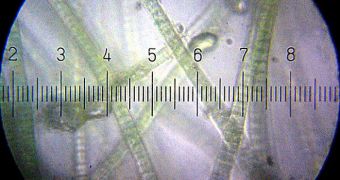Billions of years ago, small organisms known as cyanobacteria became the factor that allowed for complex, oxygen-dependent life to exist on Earth, a new investigation reveals.
Researchers say that, at the time, the world had a much different chemical composition than it does today, especially as far as the atmosphere goes.
This meant that there was no oxygen in the air. Today, concentrations of the vital gas exceed 21 percent, but that was definitely not the case two and a half billion years ago.
At that point, the development of complex, multicellular organisms, such as mammals and humans, was clearly out of the question. The chemical support for such life forms was nonexistent.
The planet featured only unicellular organisms, which were content to living a rather dull life in the primitive environment our planet had.
According to a new investigation, it would appear that so-called “oxygen oasis” in the planet's oceans were responsible for the production of large amounts of oxygen.
Gradually, the cyanobacteria in there “hot spots” started producing massive amounts of oxygen, in a process that is still going on to this day. They are basically the reason why we're all here.
Details of the recent study, which was carried out by experts Brian Kendall and Ariel Anbar, appear in the August 22 online issue of the esteemed scientific journal Nature Geoscience.
Both research scientists are based at the Arizona State University (ASU).
“Our research shows that oxygen accumulation on Earth first began to occur in surface ocean regions near the continents where the nutrient supply would have been the highest,” Kendall says.
He is a postdoctoral research associate at the ASU College of Liberal Arts and Sciences School of Earth and Space Exploration.
“The evidence suggests that oxygen production in the oceans was vigorous in some locations at least 100 million years before it accumulated in the atmosphere. Photosynthetic production of oxygen by cyanobacteria is the simplest explanation,” he adds.
“Recent research in the modern oceans reveals that the amount of oxygen is decreasing in some places. Some suspect this decrease is tied to global warming,” Anbar adds.
“One of the ways we might figure that out is to reconstruct ocean oxygen content on the slopes of the seafloor in recent history. So the same techniques that Brian is advancing and applying to billion-year-old rocks might be used to understand how humans are changing the environment today,” he concludes.

 14 DAY TRIAL //
14 DAY TRIAL //